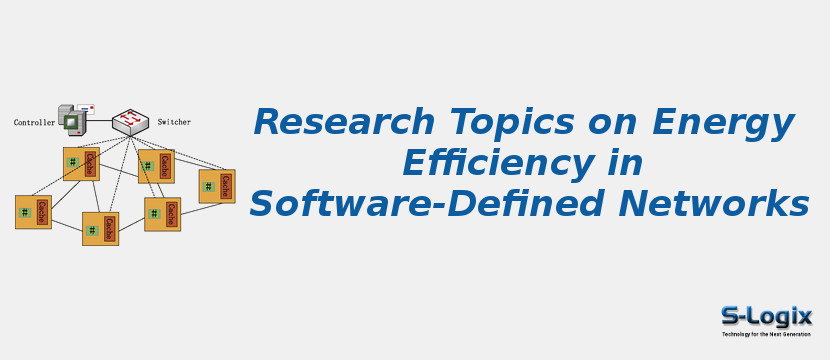Software-Defined Networking (SDN) is an estimated technology expanding at an alarming rate, capable of leading an entire network efficiently and transforming the complex network structure into a manageable one.
Energy efficiency has become a fault-finding issue with the explosive growth of network traffic and electricity consumption. Many energy savings techniques are considered to enhance network performance. Numerous development groups propose many innovative solutions to maintain the trade-off of energy savings and performance issues.
The energy consumption rate in the data center is becoming a highly trending, challenging problem and plays various roles like computing, storage and diverse services. In SDN, the programmable controller is used intelligently to provide solutions for energy efficiency consumption by a networking infrastructure.
The performance of SDN is entirely monitored by its energy consumption rate. The taxonomy of energy-efficient solution in SDN are broadly classified into three main subcategories,
• Traffic-Aware Model
• End-host Aware Model
• Rule Placement Model
Traffic-Aware Model: Network components greatly inspire Traffic-Aware Model (TAM) approaches that are often underutilized. The key principle of TAM is to turn on or off network components based on the heavy traffic flows. Therefore, this desired properties that take place in Traffic aware model are:
• Elasticity
• Topology awareness
• Queue engineering
• Smart sleep and off
End-host Aware Model: End-host system awareness uses SDN to redeem energy by capitalizing on virtual machine placements and migrations. Most energy-aware routing algorithms can-t assume the limited rules space inside switches. It turns off underutilized physical servers and runs their tasks on fewer servers in SDN-based data centers. The desired properties of the end-host aware model handle on
• Server consolidation
• Network optimization
• Dynamicity
• Reusability.
Rule placement Model: The rule placement Model addresses the energy saving techniques from the meaning of rules and compressing to save required space. It deeply focuses on how to place the rules in the forwarding switches. It is an NP-hard problem that requires heuristic-based solutions according to their needy. The desired property of the Rule Placement model handles on
• Global optimization
• Compromised routing
• Rule space reduction
• Proactive or reactive.
The traffic management and implementation of sleep-awake mechanisms in SDN will bring down the overall power consumption of the network and total energy bills.
SDN-s openness, programmability and feasibility reduce the complexity of implementing energy efficiency approaches in both software and hardware. Here, the energy-efficient schemes that can be implemented in SDN are :
• Energy Efficiency Through Optimal Network Resource Utilization.
• Energy Efficient Traffic Engineering/Management.
• Energy Efficient SDN Policy Updating Including Security Policies.
• Energy Efficient Monitoring of Traffic Conditions.
• Ternary Content Addressable Memory (TCAM) Compression for Energy Efficiency and Network Security.
• Proper Placement of SDN Devices for Energy Efficiency and Network Security.
The Global view feature in SDN can be owned for efficient traffic management to improve the overall network performance and resource utilization and reduce the energy consumption of the network.
Energy efficiency is the most important issue in Wireless Body Area Networks (SD-WBAN) architecture. Current energy-efficient routing algorithms use the remaining energy, transmission power or link distance as metrics to determine the optimal path. It promises several advantages, such as:
• Flexibility without sacrificing forwarding performance
• High efficiency through optimized routing
• Ease of implementation and administration
• Cost reduction.
Also, SDN faces many challenges and open problems to realize its full potential in energy efficiency are classifies as :
• Scalability of the SDN Controller.
• Flow-table Management in SDN.
• Performance of SDN Switches.
• Real-time Change Update in SDN.
• Optimal Location of SDN Devices.
• Integration of SDN and Traditional Networks.
